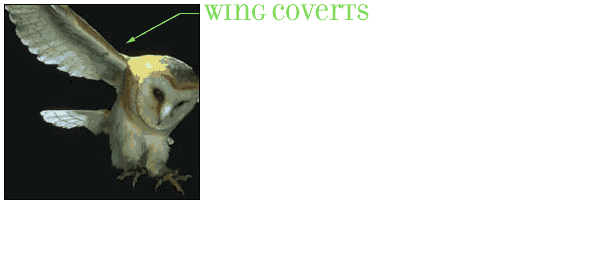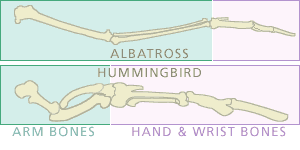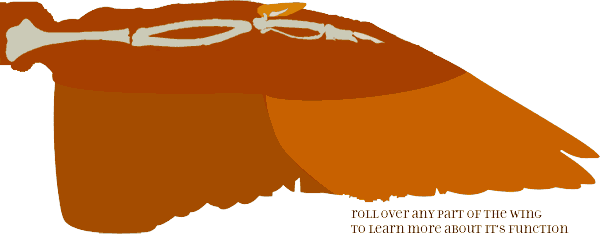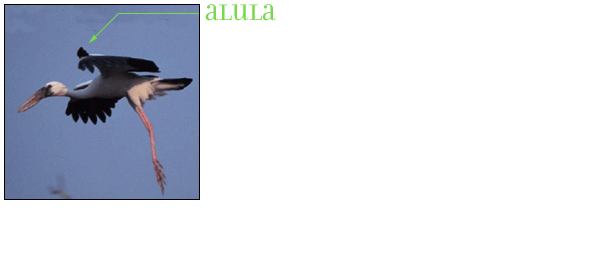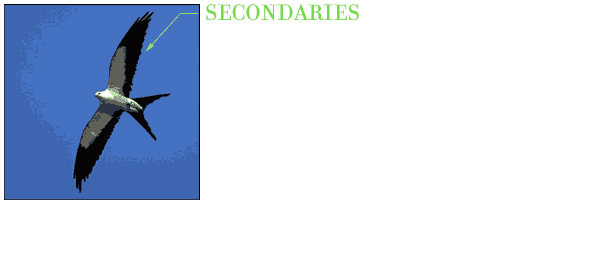Secondary flight feathers make up the "arm"
part of the bird's wing. This part of the wing is shaped to offer lift for
gliding flight. Not much thrust is generated from flapping.
Compare the albatross and hummingbird wings, below. An albatross flies by
gliding, so it has a great number of secondary feathers which forms more surface
area to create more lift. On the hummingbird, which has to flap at incredible
speeds, the "hand" part makes up most of the wing.
This part of the wing keeps the bird flying
efficiently. Other feathers do the work of keeping the bird in the air. Covert
feathers are softer than flight feathers.
They create a smooth area for the air to flow over the wing providing lift.
The alula is a special part of the wing that
can be hard to notice. It has a separate phalanx (finger bone) and muscles
that allow the bird to use their alula to help them control their flight.
Like the flaps on airplane wings, the alula helps keep the birds from stalling,
and is useful in slow manoeuvers.
Birds control their flight by changing the shape
of their wings.
Primary flight feathers make up the "hand"
part of the wing. This part of the wing provides thrust from flapping. The
hummingbird's wing, seen below, is adapted for flapping flight, with shrunken
arm bones and very developed hand bones.
Compared to a human, the bones in the hand and wrist have mostly fused together.



